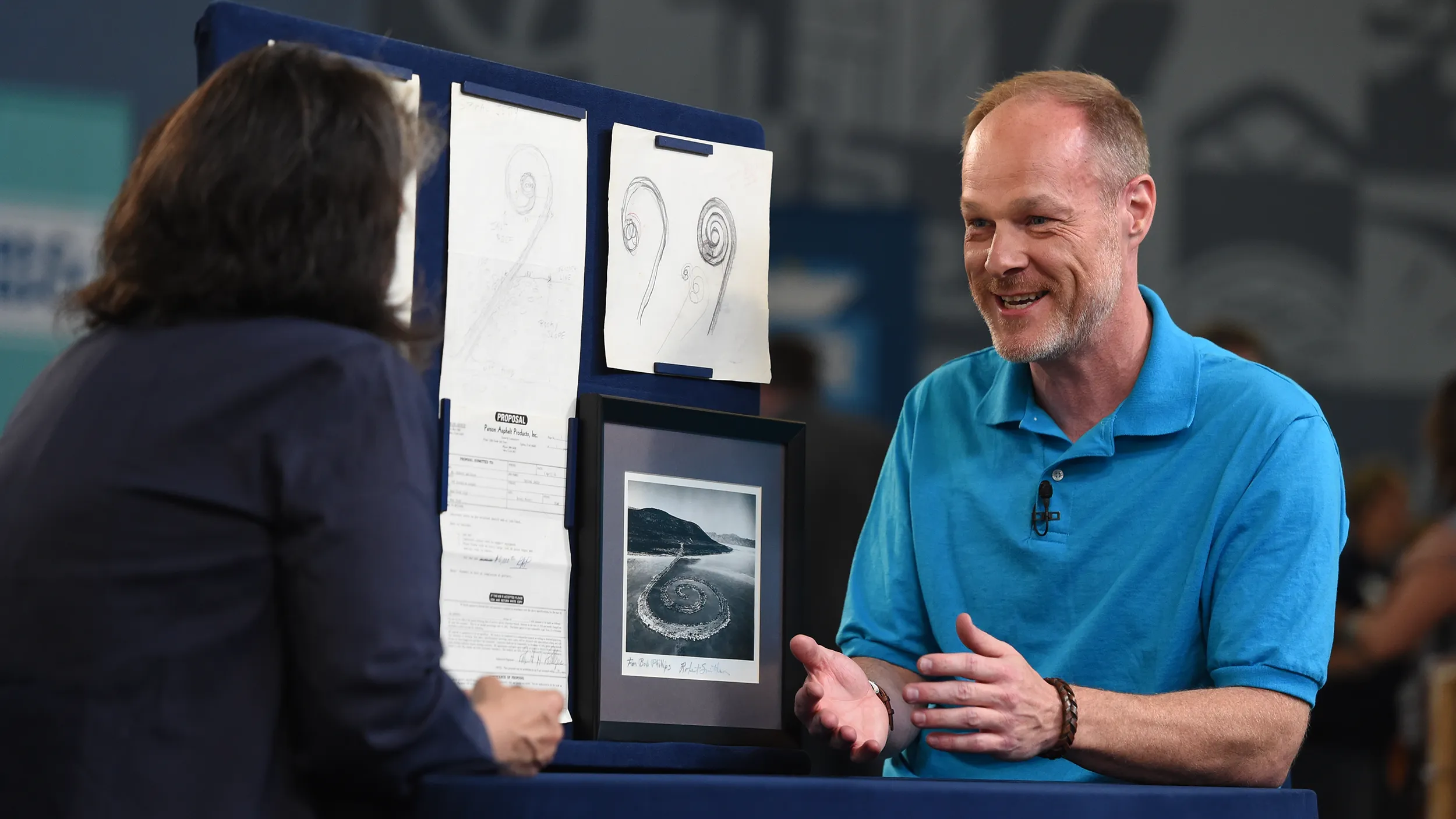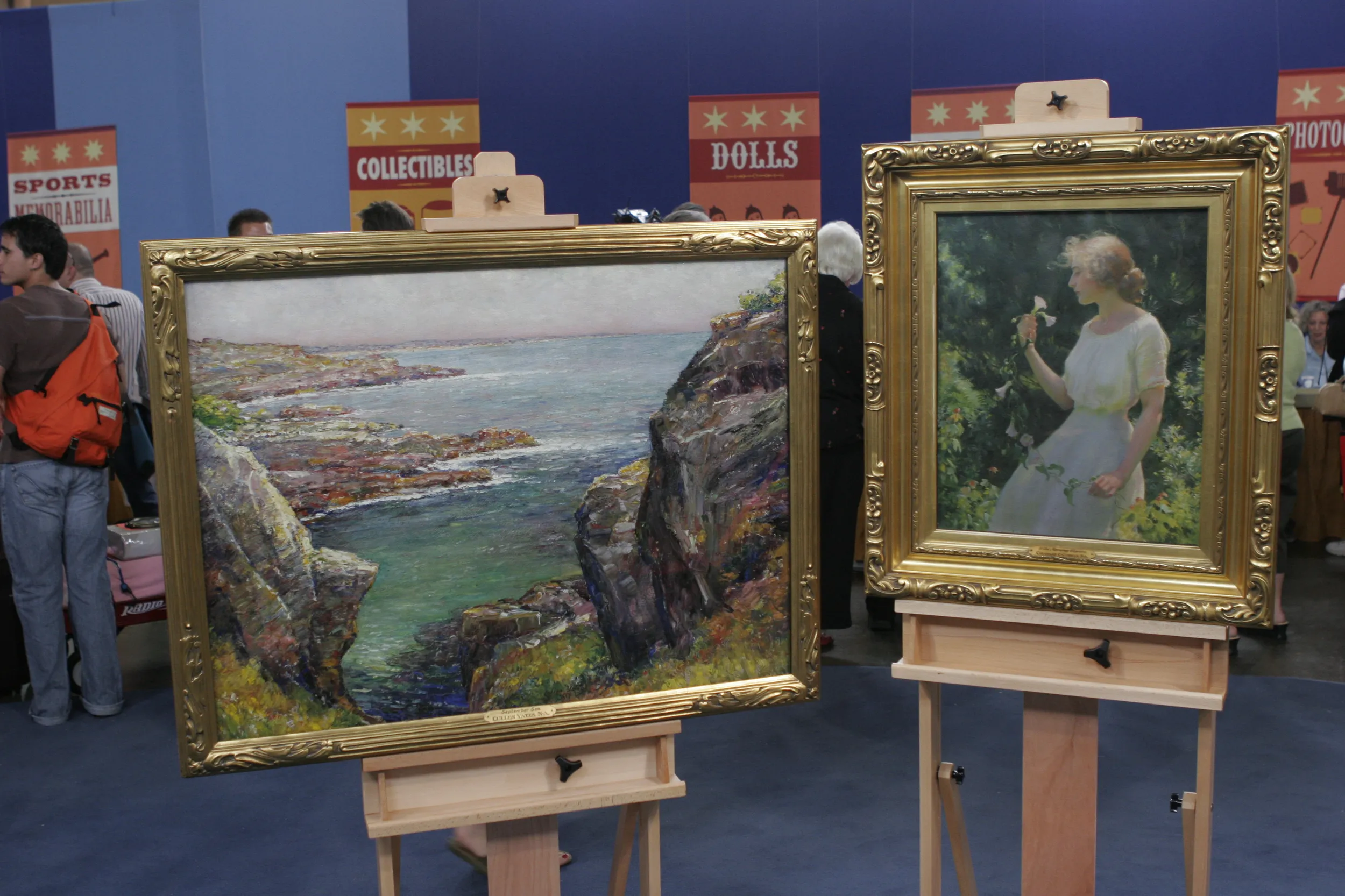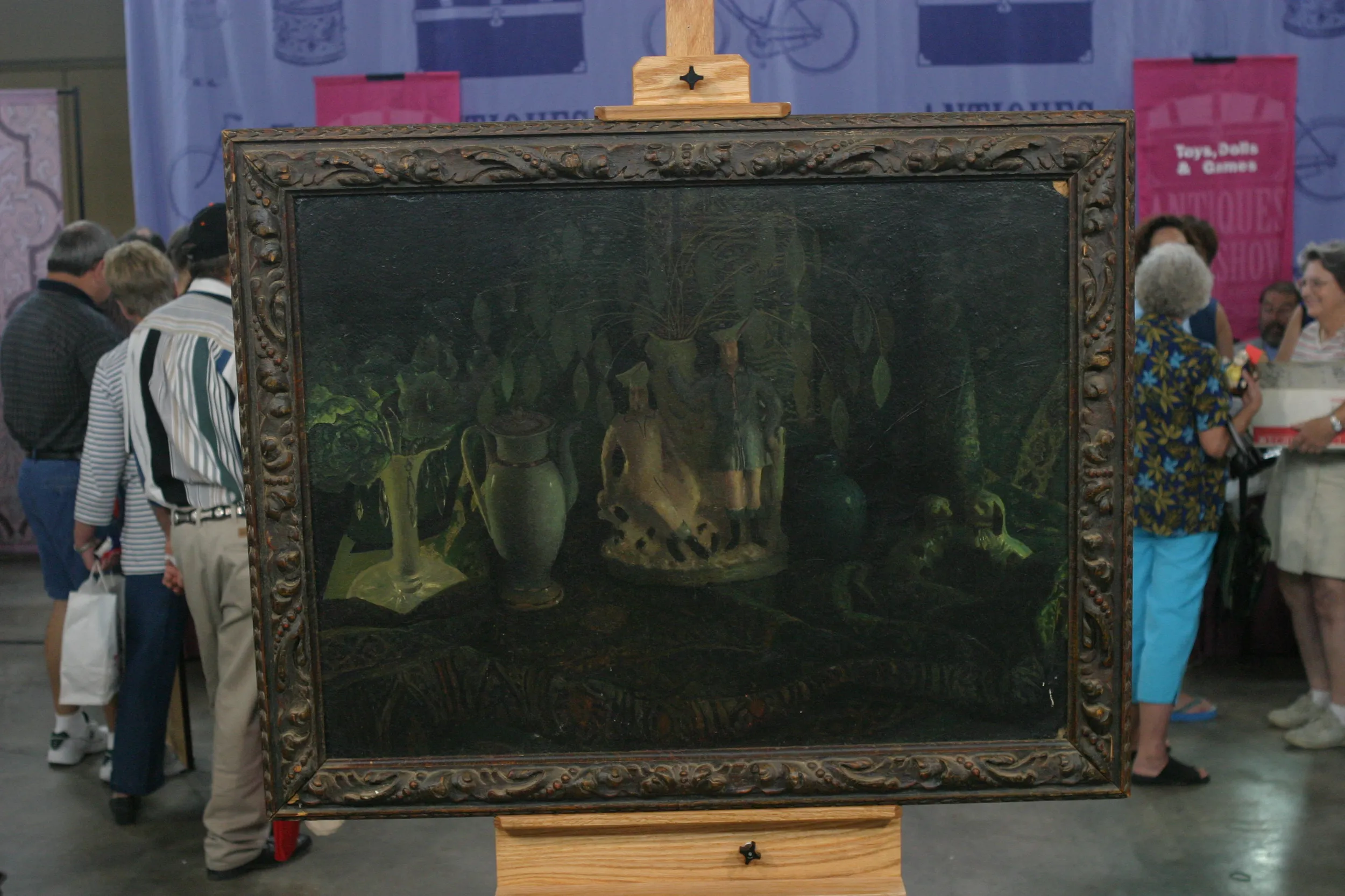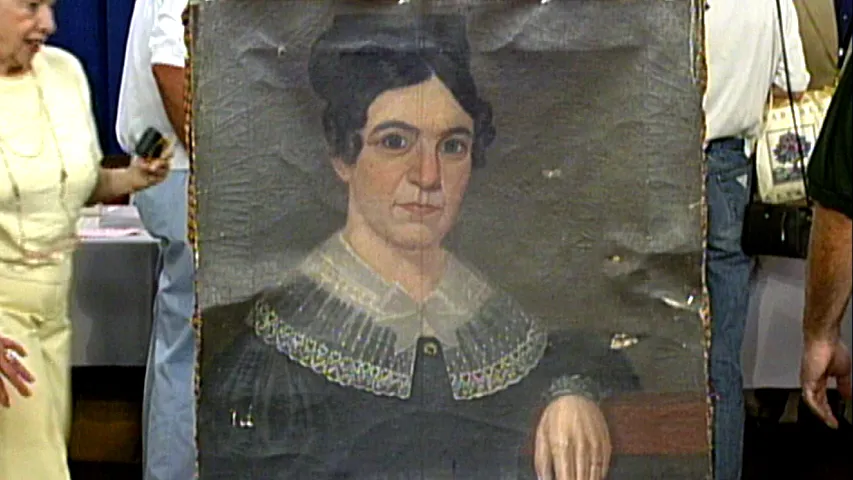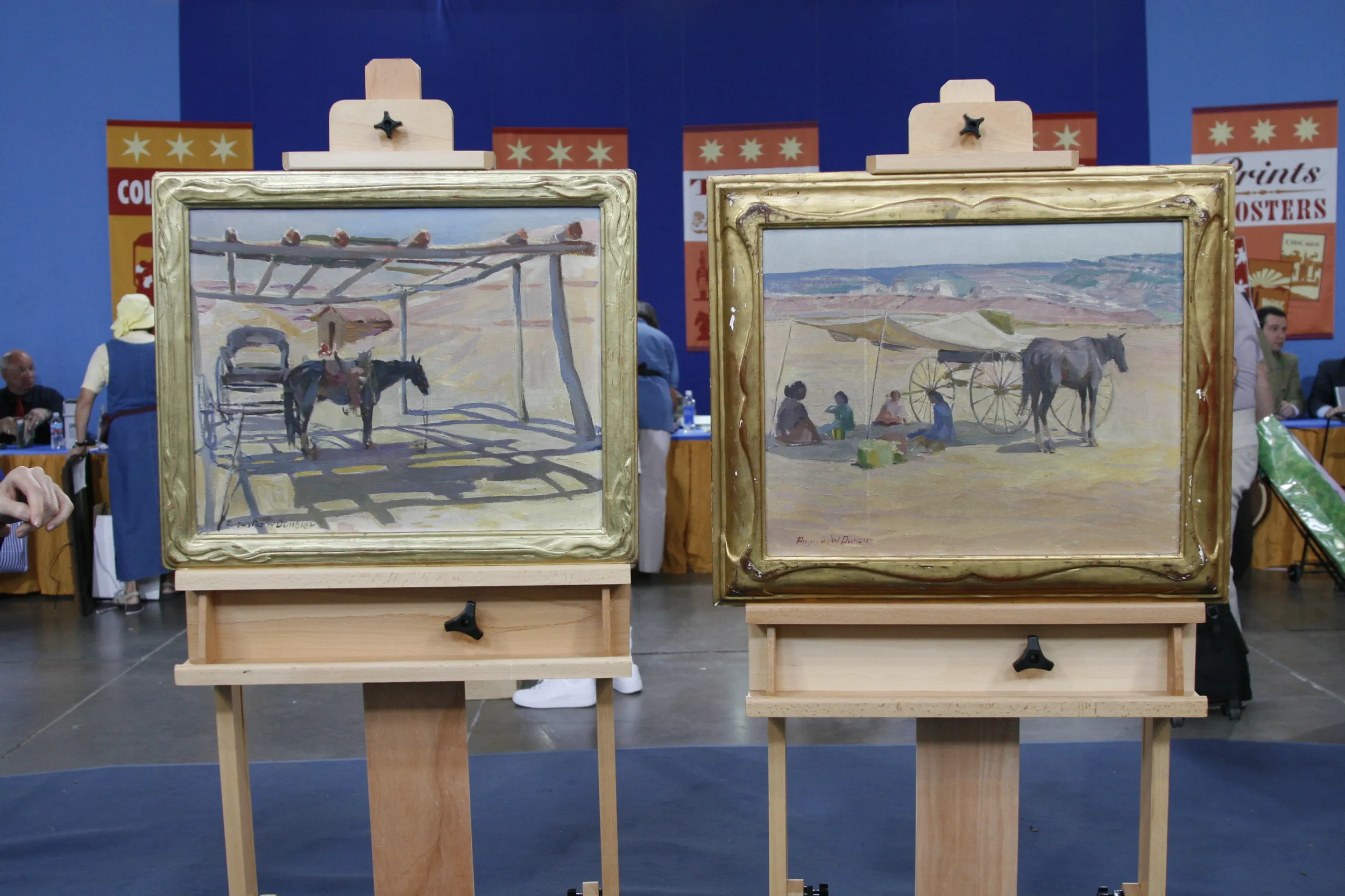GUEST: Well, this is a painting that's out of my grandparents' home. I believe they bought it on one of their trips to Europe, and that would have probably been somewhere in the late 1800s, early 1900s.
APPRAISER: Do you know who the artist is?
GUEST: I tried to read it once, and I wasn't able to see it very well. So no, I don't.
APPRAISER: It is signed, lower left, as you can see right here. And it's signed "Frans van Leemputten." Now, he's a Belgian artist. He was born in 1850, and he was from an artistic family. His older brother, Cornelius van Leemputten, is also a known artist who specialized in paintings of sheep and countryside scenes.
GUEST: Oh.
APPRAISER: Now, the younger brother, Frans van Leemputten, he was an artist who was a trained artist, and he later would develop his own style that was heavily influenced by other artists such as Jean-François Millet, who is a French Barbizon and realist painter. And when I saw this painting, I immediately recognized Millet in it.
GUEST: Really?
APPRAISER: And looking later at who the artist was, I could see then how influenced he was by Millet, and how this is a real gem of a painting in terms of Belgian realism. What we see here is a boy, probably like a peasant boy or a farmer boy sitting on his horse, in the Belgian countryside. Now, what happened with van Leemputten's career is that he would paint somewhat more kind of city genre scenes. And then later, because of the influence that he had from the other painters, he went to the countryside and he painted almost always these kind of scenes with these romantic Barbizon tones-- this dark and light, the soft brushwork. Things that are very related to Barbizon School painting. And the realism part of it comes into the fact that this is a peasant boy, this is a farmer boy. It's not... this is real life, this is peasant life, and it celebrates it. It's a nice scene. With the dog, it's kind of romantic in that sense. This would have been in the Campine or Brabantine region of Belgium, where the artist painted a lot. The medium of this work is oil on canvas. Although it looks like it was laid on board at some point.
GUEST: Uh-huh.
APPRAISER: It's not dated here, but I would assume that this work would be around 1870s to 1880s. With auction records of the artist that exist, I would probably put an estimate on this of $8,000 to $12,000 at auction. But I would not be surprised if it went higher.
GUEST: Really?

